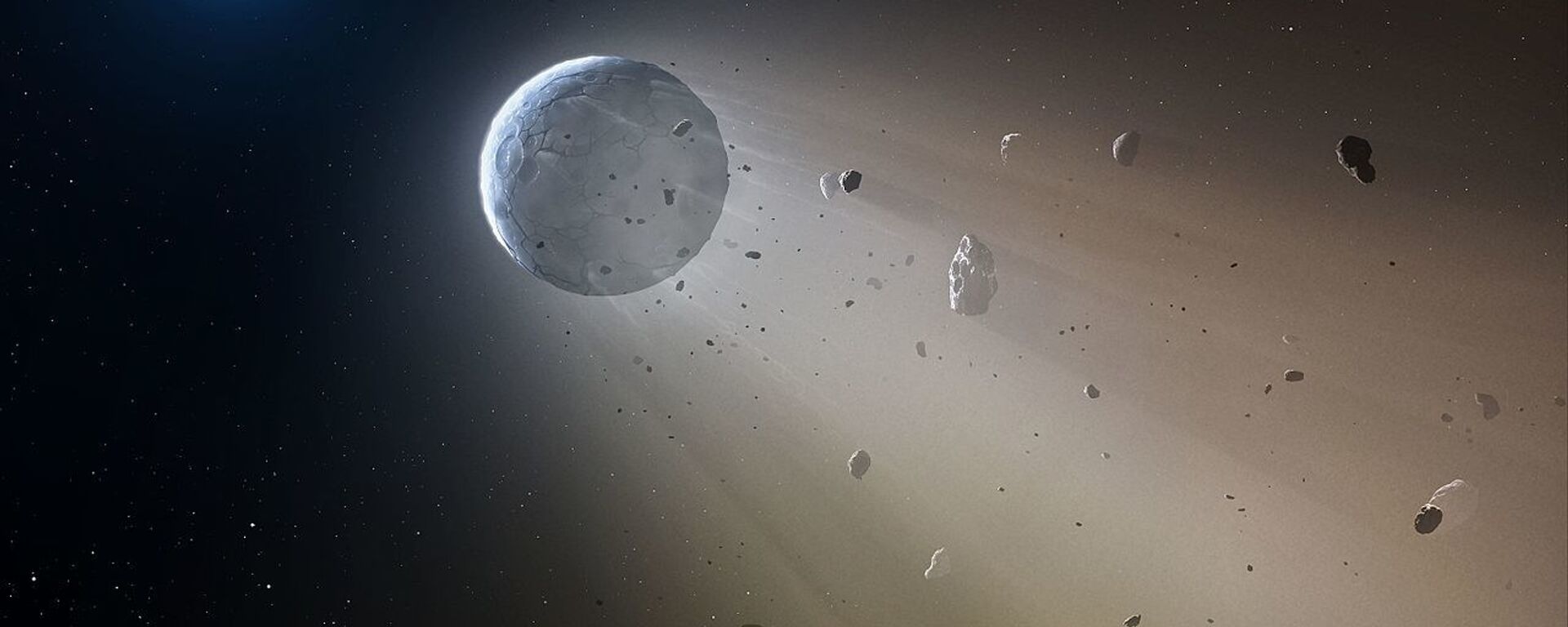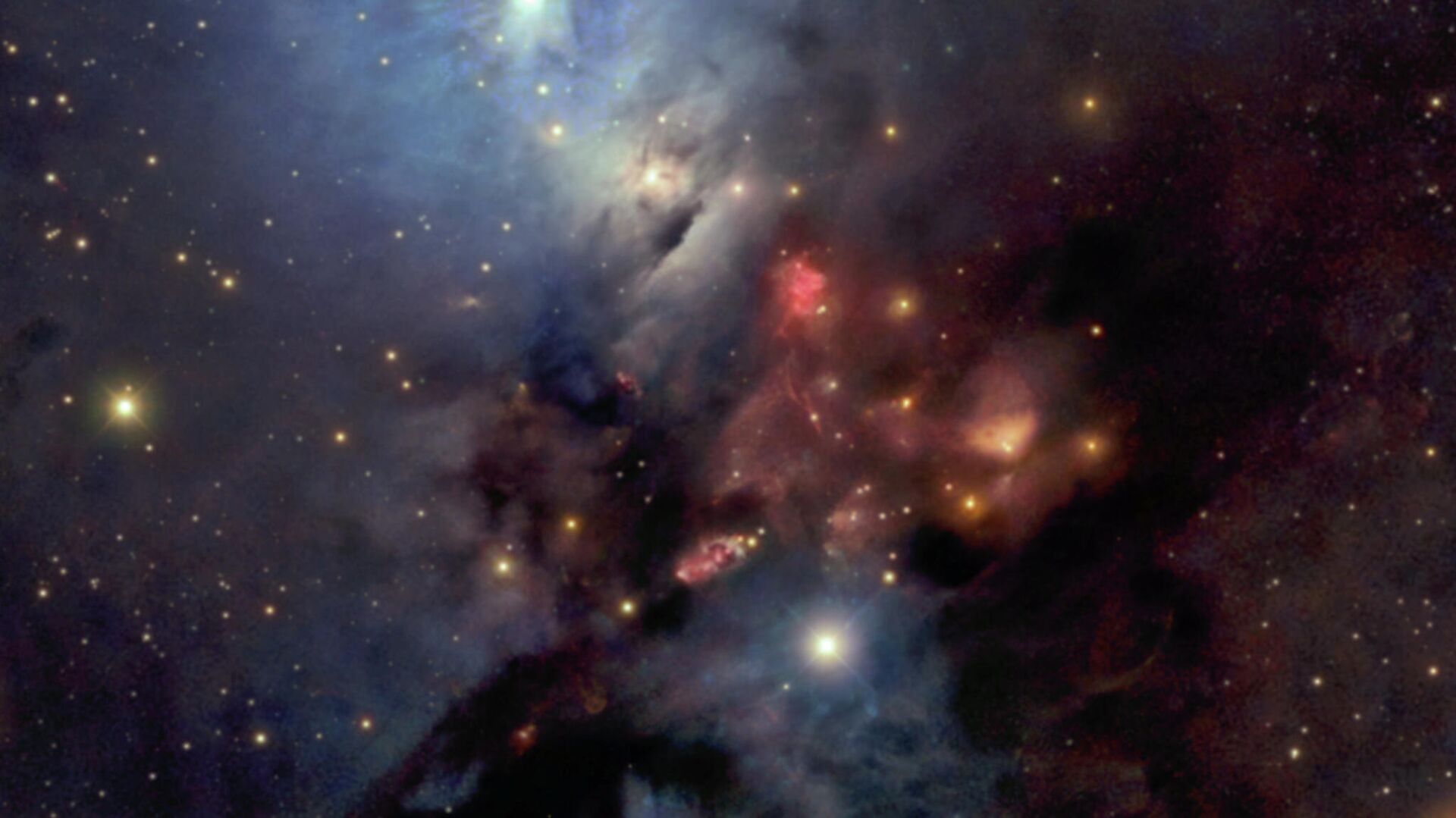https://sputnikglobe.com/20220315/three-planetary-systems-observed-forming-in-binary-star-research-reveals-1093875330.html
Three Planetary Systems Observed Forming in Binary Star, Research Reveals
Three Planetary Systems Observed Forming in Binary Star, Research Reveals
Sputnik International
The complex formation of dust around SVS 13, a binary star system some 980 light-years away, sheds light on how planetary systems are born in these interesting... 15.03.2022, Sputnik International
2022-03-15T01:40+0000
2022-03-15T01:40+0000
2023-04-12T16:57+0000
science & tech
planet
star
research
space
https://cdn1.img.sputnikglobe.com/img/07e6/03/0f/1093877945_0:512:2047:1663_1920x0_80_0_0_06f34dd186b66be8b458de46ee4167db.jpg
In unprecedented detail, an international group of astronomers have discovered primordial material that may be giving birth to three planetary systems around a binary star, the research, published in The Astrophysical Journal this week, revealed.According to a University of Manchester press release, the scientific team analyzed binary star SVS 13, still in its embryonic period, using the Very Large Array (VLA) and the Atacama Large Millimeter/Submillimeter Array (ALMA). This research has produced the most comprehensive description of a binary system in formation to date.The scientist added that the "outer disk shows a spiral structure that is feeding matter into the individual disks, and in all of them planetary systems could form in the future." The team was able to recreate the binary's orbit and determine the masses of the stars, the system's orientation, and the sizes and masses of the disks. They discovered two smaller disks, one with a 12-astronomical-unit dust radius and the other with a 9-astronomical-unit dust radius, both having a gas radius of 30 astronomical units. Both stars are encased in a massive spiral circumbinary disk with spiral arms extending about 500 astronomical units. The system is said to be made up of two stars with a total mass almost equal to that of the Sun, locked in a relatively close orbit only 90 astronomical units apart."At the IAA we began studying this system twenty-five years ago. We were surprised when we discovered that SVS 13 was a radio binary, because only one star is seen in the optical. Normally, stellar embryos are detected in radio, but they only become visible at the end of the gestation process," Guillem Anglada, a researcher at the Instituto de Astrofísica de Andalucía (IAA-CSIC) who is coordinating the studies of the system, said. Stars are formed when molecular gas floating in space congeals into tight knots. A knot will eventually collapse under its own gravity and begin spinning, if conditions are proper. The material around it flattens into a disk that, as it rotates, spools into the star and feeds its expansion. Whatever remains after the star's development is completed becomes a protoplanetary disk. All the residual dust and gas jumbles around until it forms large enough clumps to produce planets, asteroids, comets, moons, dwarf planets, and all the other celestial bodies found in a planetary system.Let's stay in touch no matter what! Follow our Telegram channel to get all the latest news: https://t.me/sputniknewsus
https://sputnikglobe.com/20220212/scientists-spot-hints-of-potentially-habitable-planet-near-dead-star-1092960423.html
Sputnik International
feedback@sputniknews.com
+74956456601
MIA „Rossiya Segodnya“
2022
News
en_EN
Sputnik International
feedback@sputniknews.com
+74956456601
MIA „Rossiya Segodnya“
Sputnik International
feedback@sputniknews.com
+74956456601
MIA „Rossiya Segodnya“
science & tech, planet, star, research, space
science & tech, planet, star, research, space
Three Planetary Systems Observed Forming in Binary Star, Research Reveals
01:40 GMT 15.03.2022 (Updated: 16:57 GMT 12.04.2023) Kirill Kurevlev
Managing Editor
The complex formation of dust around SVS 13, a binary star system some 980 light-years away, sheds light on how planetary systems are born in these interesting conditions. Because multiple-star systems contain a substantial proportion of the stars in our galaxy, this reportedly has outcomes for our knowledge of planet formation and evolution.
In unprecedented detail, an international group of astronomers have discovered primordial material that may be giving birth to three planetary systems around a binary star, the research, published in
The Astrophysical Journal this week, revealed.
According to a University of Manchester
press release, the scientific team analyzed binary star SVS 13, still in its embryonic period, using the Very Large Array (VLA) and the Atacama Large Millimeter/Submillimeter Array (ALMA). This research has produced the most comprehensive description of a binary system in formation to date.
"Our results have revealed that each star has a disk of gas and dust around it and that, in addition, a larger disk is forming around both stars," according to Ana Karla Diaz-Rodriguez of the Institute of Astrophysics of Andalusia (IAA-CSIC) in Spain and the ALMA Regional Centre at the University of Manchester.
The scientist added that the "outer disk shows a spiral structure that
is feeding matter into the individual disks, and in all of them planetary systems could form in the future."
"This is clear evidence for the presence of disks around both stars and the existence of a common disk in a binary system," she noted.
The team was able to recreate the binary's orbit and determine the masses of the stars, the system's orientation, and the sizes and masses of the disks. They discovered two smaller disks, one with a 12-astronomical-unit dust radius and the other with a 9-astronomical-unit dust radius, both having a gas radius of 30 astronomical units.
Both stars are encased in a massive spiral circumbinary disk with spiral arms extending about 500 astronomical units. The system is said to be made up of two stars with a total mass almost equal to that of the Sun, locked in a relatively close orbit only 90 astronomical units apart.
"At the IAA we began studying this system twenty-five years ago. We were surprised when we discovered that SVS 13 was a radio binary, because only one star is seen in the optical. Normally, stellar embryos are detected in radio, but they only become visible at the end of the gestation process," Guillem Anglada, a researcher at the Instituto de Astrofísica de Andalucía (IAA-CSIC) who is coordinating the studies of the system, said.
"It was very strange to discover a pair of twin stars where one of them seemed to have evolved much faster than the other. We designed several experiments to get more details and to find out if in such a case either of the stars could form planets. Now we have seen that both stars are very young, and that both can form planets."

12 February 2022, 10:23 GMT
Stars are formed when molecular gas floating in space congeals into tight knots. A knot will eventually collapse under its own gravity and begin spinning, if conditions are proper. The material around it flattens into a disk that, as it rotates, spools into the star and feeds its expansion. Whatever remains after the star's development is completed becomes a protoplanetary disk.
All the residual dust and gas jumbles around until it forms large enough clumps
to produce planets, asteroids, comets, moons, dwarf planets, and all the other celestial bodies found in a planetary system.
Let's stay in touch no matter what! Follow our Telegram channel to get all the latest news: https://t.me/sputniknewsus 



